A Foodie’s Dinner of Malaysian Food at Selesa Restaurant in London.
Selesa Restaurant serves good Malaysian Food in London.
Food is the main topic of conversation in Malaysia. The other being politics and education for their children.
Secondly, a common greeting in Malaysia is “Have you eaten?” rather than “How are you?”
Together, this shows the importance of food in the Malaysian culture.
Where ever you go in Malaysia, there is street food at many street corners, alley ways, markets, food courts, coffee shops and cafés. Then there are the proper restaurants and fine dining establishments. What astonishes visitors to Malaysia is the variety and high standard of the food. Even more surprising is the price. It is reasonable and very good value.
The food article in this travel blog shows the origins of Malaysia Food. It has a taste unique and is a hotpot of flavours.
Variety of Foods
It is the variety of foods that baffles the uninitiated. Malaysia is located between India and China – the two oldest and most influential cultures in the world. A “new-comer” was the British who ruled Malaysia and Singapore as a Crown colony for 150 years until 1965.
Firstly, Malaysian food is from the different cultures. It is based on the cultural influences of the people – Local (Malay, Peranakan and indigenous) Chinese, Indian and Western.
Secondly, there is the variation within the country. Take for example Chinese food – they can come from different provinces in China – like Guangdong or Fujian or cities like Shanghai or Beijing. Within the province – there are regional differences – from the capital city like Guangzhou or from different parts of the province. This is similar to foods from India – North, East, South or West parts of the sub-continent.
Thirdly, there is the fusion of the various foods. The combinations are mind boggling.
Variation of Dishes
In Malaysian food, there can be a considerable variation of the preparation of a dish with the same name from one side of the country to the other. Take the example of a local speciality – Laksa. This Peranakan dish is essentially noodles and other condiments in a “curry soup”. But, there is a wide variation of this dish depending on the part of the country it comes from. Laksa prepared in Penang, is different from Kuala Lumpur, Ipoh, Melaka and the east coast of Peninsula. Laksa in Sarawak (Malaysian Borneo) is different again.
Abundance of food outlets
Another feature is the abundance of food outlets and the variety. Recently, I stayed at an apartment near KLCC (where Malaysia’s Twin Towers are). Within 100 metres of the apartment, there is a multitude of food places to eat.
Let me show you the numbers (these are only approximations)
- KLCC
Two food courts with an estimate of a total of 120 stalls.
Bakery, Café, Fast Food, 64 outlets
- Avenue K – 60 food stalls
- Wisma Central – 10 food stalls
- Mandarin Oriental Hotel – 10 food outlets
- Corus Hotel – 5 food outlets
- Chinese vegetarian restaurant
- Indian – Nasi Kandar
- Other Restaurants, Bars and Clubs
Admittedly, I was in the centre of Kuala Lumpur; within 100 metres of where I was staying there was a choice of no less than 300 food outlets. The food outlets were all different – food, pricing and ambience. Malaysians are very unforgiving – if you do not serve good food or good value, you will not be in business for long. There is so much choice and competition is tough.
The passion for food.
Food can create so much intense debate with emotion on the various qualities of food and the restaurants. I can understand the debate about different restaurants serving the type of food as this is a matter of personal preference. But, the type of dishes is a more objective matter. Let us take a case in point of a dish of dried noodles (mee) – Kampua mee and Kolo mee. They are similar but have different origins. A debate has been “raging” for a decade or more about the differences and the preferences of the preparations. To an outsider like me, I cannot tell the difference BUT, it is the emotion that is behind is incredible. I have found a web link that is “reasonably” objective in this debate. I am sure that are many more debates in other parts of the country. I am raising this point to show the passion and the high priority food plays in daily life.
The structure of Malaysian Food is different.
The conventional structure of the country’s food is based on the availability of raw materials. For example: in Mediterranean countries, the diet is mainly fresh fruit and leaf vegetables with goat/sheep as meat. The Northern European countries rely on diary, fruit and root vegetables of the colder climate. Meat is from cattle and pigs.
It is different in Malaysia. Its food is determined by the people. It is the culture of the locals and the immigrants that have come to settle in the country. Each immigrant group brought in their own culture and foods. Hence the variety and fusion of the foods.
Ping Coombes winner of MasterChef UK 2014
The people in Malaysia can associate with a wide range of food and tastes because they are brought up with variety. They can assimilate and adapt to change like new or foreign foods easily. The winner of the MasterChef UK in 2014 is Ping Coombes. She was born and brought up in Ipoh, the epi-centre of serious Malaysian Food. She came to the UK for University studies and has now settled in the UK.
In my opinion, it was her ability to win the competition because she could easily handle and innovate the various tastes and flavours at different stages of the competition. There are many qualities needed to win the MasterChef competition but to me, it was this adaptability that gave her the small but winning edge.
Malaysian Food in London
Malaysia Kitchen, a Malaysian government agency that looks after the promotion of Malaysian Food states that there are over 100 restaurants in the UK.
A festival of Malaysian Food in Trafalgar Square in London has been held annually since 2009. This is a showcase for Malaysian food, restaurants and Chefs. Three personalities have showcased the cooking of Malaysian food – Ping Coombes, Caroline Artiss and Norman Musa.
There is a concentration of restaurants in London and a nucleus in the Paddington area of London. A new restaurant – Selesa Restaurant has just been opened. It is a restaurant in a 4 star Park City Grand Plaza Hotel in Kensington, London.
Helen wanted to share the news that she had found a restaurant serving good and authentic Malaysian Food in a comfortable ambience. So she invited her close foodie friends have come from Malaysia and Singapore to taste the food.
This is the dinner we had:
Interiors of the Restaurant at Selesa Restaurant
This food article in the travel blog describes Malaysian food and its origins. It is unique as it comes from a wide variety of sources. It is literally a hotpot of food. Also, Malaysian food is used eaten using with fork and spoon rather than knife and fork (Western) or chopsticks (Far East). It is eaten in the Chinese Style. There are the communal dishes in the centre and eaten together with rice.
Menu: Starters @ Selesa Restaurant
Chicken & Lamb Satay – a Malay dish is similar to kebabs but smaller in size. The marinated meat is skewered on a stake and barbecued. It is eaten with a peanut sauce. Condiments include cucumber, onions and rice steamed in a parcel of banana leaves.
Steamed scallops – a traditional Chinese dish which involves ginger, spring onions and soy sauce.
Main Course @ Selesa Restaurant
Lobster Noodle – This dish was “invented” in a Chinese Restaurant in Queensway, London. Lobster is cooked in a stock together ginger and spring onions. Wan Tan noodles are then added and served.
Assam Pedas Sea Bass – Sour and Spicy Malay dish with assam (tamarind), chilli with various spices.
Beef Rendang – A Malay speciality – slow cooked beef in a rich lemongrass and coconut sauce. It is a very dry curry with delicate and soft beef.
Salt & Pepper Squid – A Chinese dish – a crisp and spicy coating for hot and tender squid.
Butter Prawns – This is a fusion dish of Malay, Chinese, Indian and the West. It contains curry leaf, grated coconut, coconut milk, butter, spices and garlic.
French Beans with mince chicken – French Beans are a vegetable from the west and it cooked using the Chinese stir fry method. The chicken is to give the dish flavour.
Fried Kan Kong with Sambal – Kan Kong is also known as Chinese Spinach. Sambal – believed to be of Indonesian origin is a sauce made from chilli peppers, shrimp paste, fish sauce, lime juice and other spices.
Fried Rice and Chicken Rice – Steamed Rice cooked in a Chicken stock.
Dessert @ Selesa Restaurant
Favourites of the Western and Peranakan palette.
Kueh Dadar – A Peranakan dessert favourite. Crepe prepared with Pandan extract which gives it the green colour. This crepe is filled with grated coconut and soaked in Gula Melaka (palm sugar).
Brownie with sliced strawberry. An established western favourite.
Pulut hitam – Another Peranakan dessert favourite. Black rice porridge sweetened with Gula Melaka and a coconut milk (the white blot on the surface).
Drinks – Teh Tarik, Coffee, Juice & Mineral Water
Teh Tarik – This is from South India. The tea sweetened with condensed milk is cooled by repeated pouring it to another container. A “froth” is present on top of the mug.
Conclusion:
After going through the etymology of each dish, you can see that the dishes come from one particular culture (like Malays, Chinese, Malay or Western) or a mixture of the cultures. This diversity is the heart of Malaysian Food.
The main point of the dinner was to introduce Helen’s foodie friends to this restaurant. The general comment was that the food was “deliciously good and authentic”, “just like home (Malaysia and Singapore)”. The company on the dinner table was really enjoyable. There was talk about coming back and inviting friends. There was an idea of having a Malaysian afternoon High Tea.
This food article written for this travel blog shows that Malaysian food comes from a diverse cultures and the country has an abundance and large variety of foods. Food is a very priority in Malaysian Culture.
Fact file:
Mr Jefri is CEO of FIC hotels in London. One of Jefri’s ambitions is to have a restaurant serving Malaysian food seriously comparable to the best in its origins. He has now found a team with Chef Mary fulfilling this cherish aim.
Selesa Restaurant at Park City Grand Plaza Hotel, Kensington, 18-30 Lexham Gardens, W8 5JE Tel: 020 7341 7090
About Dr Michael Oon:
Michael was brought up in Singapore and came to the UK for schooling. He was a forensic scientist at the Metropolitan Police Forensic Science Laboratory (New Scotland Yard, London) for 20 years. He is now a consultant practicing traditional feng shui and works with property developers. He specialises in helping to sell property faster. He has travelled extensively around the world as part of his work and together with his wife Helen.
Posts on Malaysian Food
- 10 Mouth-Watering Facts of Hainanese Chicken Rice & Hainanese Delights Restaurant
- The Best Seafood in Town – Lim Hock Ann Seafood Restaurant
- A Foodie’s Dinner of Malaysian Food at Selesa Restaurant in London.
- The Roti King is hidden in Doric Way
- Dinner at Guan Chua ’s Peranakan Food Supper Club
All rights reserved © 2015-2016 MyFacesAndPlaces.co.uk




















bella | Mar 13, 2020 at 7:40 am
Wow, great article. thanks for sharing.